The Kaibo Zonshinzu anatomy scrolls, painted in 1819 by Kyoto-area physician Yasukazu Minagaki (1784-1825), consist of beautifully realistic, if not gruesome, depictions of scientific human dissection.
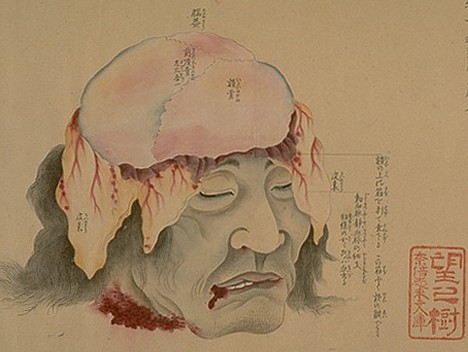
Unlike European anatomical drawings of the time, which tended to depict the corpse as a living thing devoid of pain (and often in some sort of Greek pose), these realistic illustrations show blood and other fluids leaking from subjects with ghastly facial expressions.
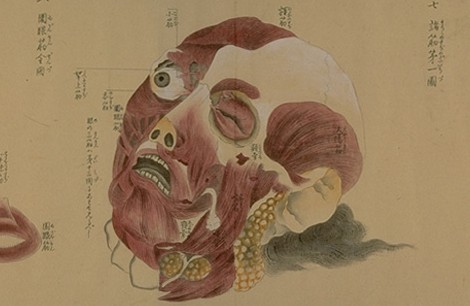
The fact that the bodies used in scientific autopsies in Edo-period Japan generally belonged to heinous criminals executed by decapitation adds to the grisly nature of the illustrations.
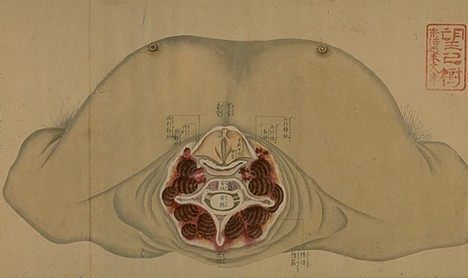
According to the Keio University Library (where these documents are currently stored), the two scrolls contain 83 illustrations based on Minagaki's observations of over 40 bodies. They are regarded as the best collection of early 19th-century anatomical drawings by a Japanese hand.
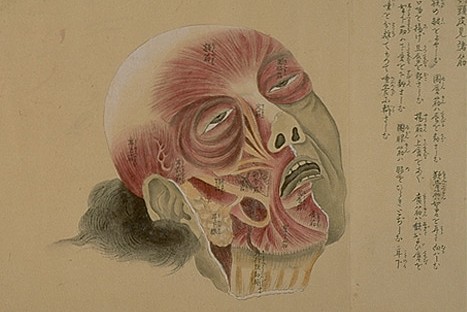
The first scroll includes a handwritten compliment by Philip von Siebold, the German physician credited with being the first European to teach Western medicine in Japan, who was reportedly impressed by the quality of the drawings when he observed them in 1826.
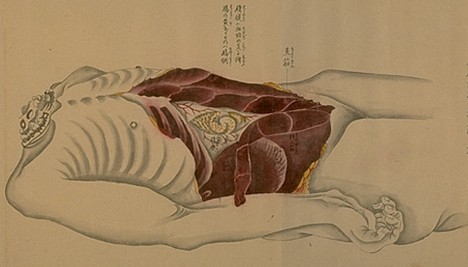
Siebold's note, in Dutch, reads: "This anatomical research has been carried out with great diligence and should therefore achieve great recognition."
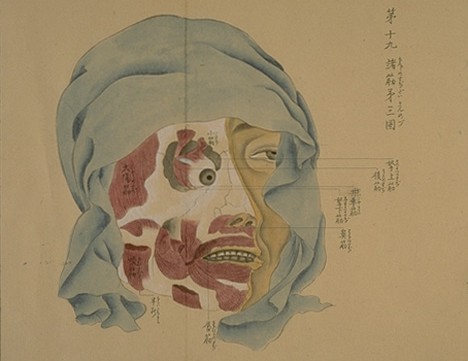
In 2003, Japan's Ministry of Culture designated Kaibo Zonshinzu an important cultural property, saying that the scrolls, which were produced as a result of actual observation and based on Dutch scholarship, demonstrate the level of knowledge that medical science reached in the Edo period.
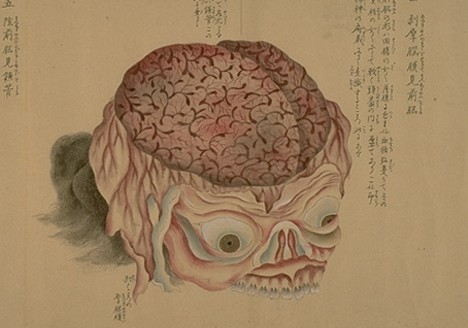
[Link: Kaibo Zonshinzu via Ectoplasmosis >> Morbid Anatomy >> Bibliodyssey]

GoddessCarlie
I am loving these series of posts of pictures from old documents. I think they are very interesting! Thank you.
[]Bill
These are great. I love it when your site talks about the art of japan. Sure robots and shit are great, but this is why I go to the site. Oh and anything about Gamera.
[]Matt Volatile
Are these printed / collected in a book form? Or published anywhere at all?
[]RWG
Were these criminals? or were they decapitated and bisected for the drawings? \NotSoSure
[]BRO
"generally belonged to heinous criminals executed by decapitation"
-There's your answer
[]Madrid
Da repulús, y asquito.
[]pkay
Very cool pieces of art work!
They looked like they were in a lot of pain before they died hehe!
Anyhow all the best! Cheers :).
[]D.
Japanee art always seems to have a militaristic air. Even here, the pictures seem to show gore and suffering, in contrast with the pictures of Vesalius where the figures not only look content but have an elegance and beauty entirely lacking here.
[]fernando
I think your comment reflects more on your limited aesthetic preferences than it does on the scrolls.
[]Jethro
Thats awesome. I just finished my undergraduate anatomy class. Working with the cadavers was awesome! I would love to draw cool pictures of anatomy.
[]